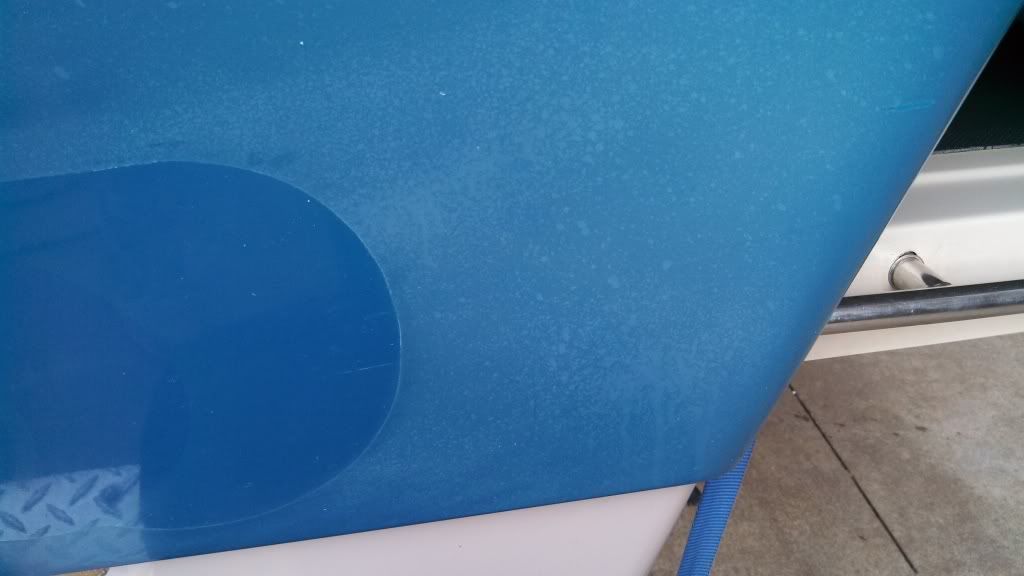-

Thanks for making my point Ngavdba, I would never recommend a newbie doing what is being suggested. As I said earlier, the chance of making a mistake is huge.
I would rather someone take a little extra time and sweat to do it a little at a time, and to learn while they do it, versus going for the gold on their first try.
-

I'm working on this again and working by hand. I couldn't find the other thread where we were talking about using an air sander, but wanted to post here. Would something like this work well to do the wet sanding with?
http://www.harborfreight.com/air-too...der-90115.html
-

Disregard that link. I looked a little closer at the specs and it exceeds the cfm output of my compressor. I talked with a local paint and body supplier at lunch and ended up getting an Ingersoll Rand DA sander like this one.

I got a cushion type pad and the film type sanding discs in some different grits. I'm going to give that a shot and see how it does.
I'm assuming that using the DA I will want to use fairly light pressure?
Last edited by Okie Boarder; 06-27-2013 at 05:01 PM.
-

Looks nice. And yes on the light pressure. In fact, the orbital part won't work right with pressure that's too heavy.
-

I'd go for a palm sander, easier to get into some of the spots and roll with the contours of the hull. It won't have the big handle on it.
-

haugy, I can see where the handle might be a little cumbersome.
I started using it last night and I was really surprised it didn't do better. It seems like even the 600 grit disks don't take off enough of the oxidation. It seems like I would need to work a 12" square area for 20 minutes just for it to come off. If I go back to the block and paper at 800 grit, it seems to take off more material than the 600 grit disks. Does that seem odd to anybody?
-

By the way, did some stripe removal on the other side and this gives you an idea of what the oxidation looks like.

-

That does seem odd. Are you pressing too hard perhaps?
-

I've tried different pressures and it doesn't seem to make a difference. I went back to the shop I got the materials from and got one sheet of 400 grit. I finally got a chance to play with that a little bit last night. It appears to take off the general oxidation towards the top quite well. It still doesn't seem like it is aggressive enough to get the material down well enough around where the stripes were. I'm thinking maybe I need to use some 600 with a block and hand sand those areas. For those that have used an air sander, how long should you have to focus on a small area (12" x 12") before the surface was what it needed to be? Maybe I'm just not taking enough time?
-

With 600 or 400 grit you shouldn't have any problems. But remember as you use that type of grit, you're really rubbing the gelcoat. So it will look white after sanding. So you may essentially be getting the white oxidation off, but left with a white sanded finish and you may think it's still oxidation.
I have only used 600 grit once on a boat, and I didn't have to work it too hard. There is a point where it's so coarse that you really have to work it to get the affect since only about 65% is really rubbing at one time due to the depth of grain. The finer the sandpaper, the more contact it makes which can yield a faster sanded finish, but it may not be deep enough.
A power sander at 600 grit, holy cow, that should almost be damaging if you're in one area for about 20 minutes.
 Posting Permissions
Posting Permissions
- You may not post new threads
- You may not post replies
- You may not post attachments
- You may not edit your posts
-
Forum Rules


 Reply With Quote
Reply With Quote




